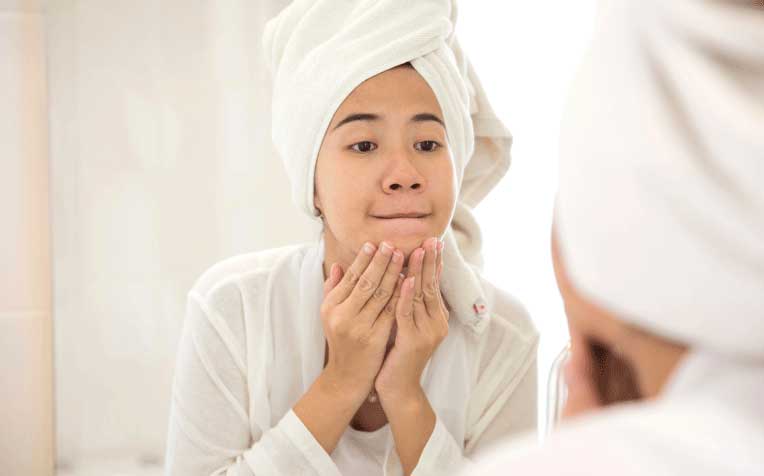
Acne in teenagers may be caused by hormonal changes during puberty.
Do chocolates and fried foods cause acne and pimples?
Acne is a skin condition that can strike at any age, but it is especially common among teenagers. Pimples occur when the hair follicles on the skin are clogged with oil and dead skin cells. Adult and teen acne can present as whiteheads and blackheads in its mild form, and pimples, pus-filled cysts and painful nodules in its severe form.
Teen acne typically starts around the age of puberty – as early as the age of 9 – and can go on for a few years. Pimples can occur on the face, neck, chest, back and shoulders, the areas with the maximum number of functional oil glands. It can be particularly severe in the mid-teen years of 14-15.
“Acne is a very common problem and in Singapore, more than 80 per cent of adolescents have acne,” says Dr Mark Koh, Head and Consultant, Paediatric Dermatology Service, KK Women’s and Children’s Hospital (KKH), a member of the SingHealth group.
However, he adds, in most cases of teen acne, the condition improves with treatment and is well controlled or cured before the patient becomes an adult. Only in some more severe cases, despite acne treatment, the condition can persist beyond the teenage years.
“Acne can be itchy and painful and it can cause the teenager a lot of psychological stress. Some patients can even go into depression because of the acne,” says Dr Koh.
Causes of acne and pimples
A combination of factors causes acne. Such factors include:
- Hormonal stimulation
- Excessive production of oil or sebum by the skin’s oil glands
- Irregular shedding of dead skin cells
- A buildup of bacteria
“Climate, family history and stress do play a part in the development of acne,” says Dr Koh. “Friction from wearing a helmet or carrying a backpack can also aggravate acne.”
He says the link between acne and foods such as chocolates, fatty foods and fried foods is difficult to prove. Research studies have found no direct association between these foods and acne.
However, he adds, “Do try to stay away from too much fried food and too much fatty food which are anyway not good for you. As for chocolate, it’s very personal – some people do believe eating chocolate worsens their acne.”
A primary cause of acne, and especially teen acne, is hormonal stimulation, hence the link to puberty when there is an upsurge in hormone production. This causes the oil glands to enlarge and produce more oil or sebum.
An excess amount of sebum, combined with dead skin cells, can accumulate in the hair follicles and block them, causing whiteheads and blackheads, the start of acne. When blocked hair follicles get inflamed or infected with bacteria, pimples and zits form.
“Infection and inflammation worsen the acne, causing cysts and nodules which in the long run can scar the skin,” says Dr Koh.
Acne treatment involves topical creams and oral medication.
Read on to find out more about the treatment options for acne in teenagers.
Ref: S13
Contributed by














 Get it on Google Play
Get it on Google Play